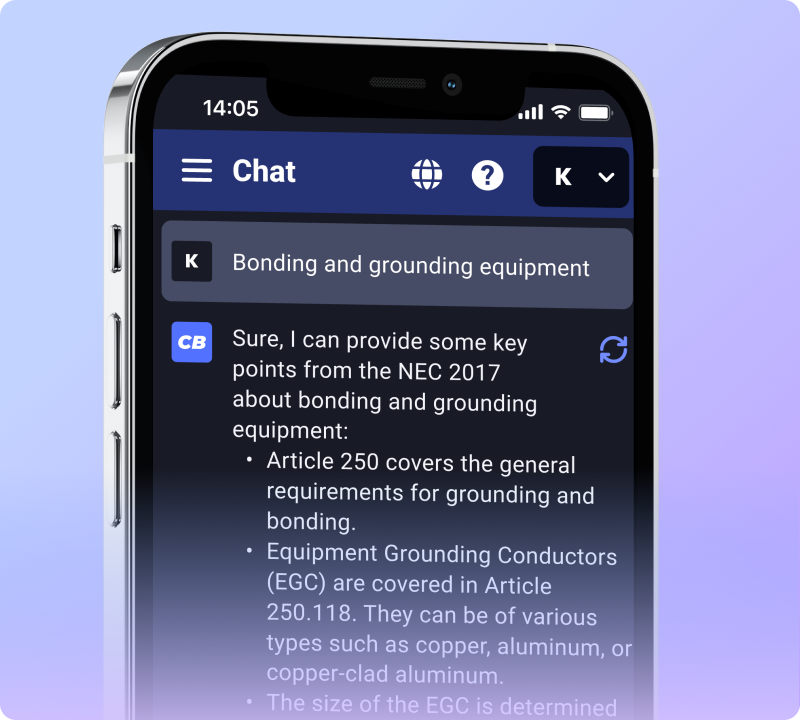Many people wonder does the NEC set minimum or maximum standards. The National Electrical Code (NEC) plays a key role in electrical safety. This article will guide you through how NEC standards affect your work.
Keep reading to learn more.
Understanding the National Electrical Code (NEC)
The National Electrical Code (NEC) establishes guidelines for safe electrical installations. Electricians and regulators rely on it to ensure compliance with safety standards across various projects.
Purpose and relevance
The National Electrical Code (NEC) serves as a critical guide for safe electrical installations. It sets standards that electricians must follow to ensure safety and functionality.
The NEC addresses many components like branch circuits, junction boxes, and receptacles. Compliance with these safety regulations is essential for protecting both property and people.
Understanding the purpose of the NEC helps electricians meet installation requirements effectively. This code provides clear guidelines on listed equipment and wiring systems. It also includes accessibility requirements for handicapped individuals.
By adhering to NEC standards, professionals uphold quality in every electrical project they undertake.
Authority and enforcement
The NEC derives its authority from the National Fire Protection Association (NFPA). This organization creates the code and updates it every three years. Local jurisdictions adopt these codes to ensure safety in electrical installations.
Electricians must follow these regulations during their work.
Enforcement of the NEC involves inspections and permits. Local building departments typically handle this enforcement. They review plans, conduct inspections, and issue permits to ensure compliance with electrical code standards.
Electricians should understand that following the NEC is crucial for safe and legal installations.
The Minimum Standards Set by NEC
The NEC outlines essential requirements for various electrical components. These standards ensure safety and reliability in installations, providing guidelines that electricians must follow closely.
Branch circuits
Branch circuits play a vital role in electrical systems. These circuits distribute power from the main service panel to various devices and appliances throughout a building. The NEC sets minimum standards for branch circuit specifications.
Electricians must follow these guidelines to ensure safety and reliability.
Each branch circuit should have specific ratings based on its intended use. For example, general-purpose outlets require a 15-amp rating, while kitchen circuits may require 20 amps.
Compliance with these electrical code requirements helps prevent overloads and potential hazards. Proper installation of receptacles connected to branch circuits ensures functionality and accessibility, including handicapped accessibility recommendations outlined by the NEC.
Junction boxes
Junction boxes play a crucial role in electrical systems. They house and protect wire connections. The National Electrical Code (NEC) sets guidelines for their installation. These boxes must allow access to wiring for future maintenance.
They also help ensure safety by containing sparks or heat from electrical faults.
NEC regulations specify the size and type of junction boxes based on the number of wires they hold. Using listed and labeled equipment is essential to meet code compliance. Electricians must follow these standards closely to avoid hazards in residential and commercial properties alike.
Properly installed junction boxes enhance safety and efficiency in electrical wiring systems.
Receptacles
Junction boxes lead to receptacles, which play a crucial role in electrical systems. The NEC sets clear standards for receptacle installation and placement. These standards ensure safety and functionality in residential and commercial spaces.
Receptacles must have proper spacing throughout a building. According to the NEC, you should place them within six feet of any wall space longer than two feet. This rule helps prevent overloading outlets with too many devices plugged in at once.
Additionally, GFCI (Ground Fault Circuit Interrupter) receptacles are necessary in wet locations like kitchens and bathrooms.
NEC guidelines also require that all receptacles be tamper-resistant where children might access them. This feature adds an extra layer of protection against electrical shock hazards.
Familiarity with these requirements ensures electricians perform safe installations that meet current regulations while upholding high-quality standards for listed and labeled equipment.
Electrical wiring systems
Electrical wiring systems play a crucial role in ensuring safe and efficient power distribution. The NEC outlines specific guidelines for the installation of these systems. Electricians must follow standards for branch circuits, junction boxes, and receptacles to prevent hazards.
Properly installed electrical wiring promotes safety and reliability in any property.
Electricians should use listed and labeled equipment to meet NEC requirements. This ensures that all components are tested for quality and safety. Compliance with handicapped accessibility recommendations also falls under these standards, helping create inclusive environments for all users.
Following adequate electrical installation guidelines protects both people and property from potential risks associated with faulty wiring systems.
Listed and labeled equipment
Listed and labeled equipment refers to items that meet specific safety standards. Underwriters Laboratories (UL) often tests these products. They issue labels or marks on compliant items.
Electricians must use this equipment to ensure safe installations.
Using listed and labeled equipment protects both the user and the property. These products follow electrical wiring guidelines set by the NEC. Such adherence helps prevent hazards, ensuring reliable performance in various applications.
Following junction box regulations or receptacle requirements is vital for proper installation as well.
Handicapped accessibility requirements
The National Electrical Code (NEC) includes handicapped accessibility requirements. These standards ensure that electrical installations are safe and usable for individuals with disabilities.
For instance, the code specifies the height of receptacles in accessible spaces. It also outlines guidelines for switches and controls to accommodate wheelchair users.
Electricians must follow these accessibility recommendations during installation. Compliance helps create an inclusive environment for everyone. The NEC sets minimum standards that contribute to safety and ease of use for all individuals, including those with special needs.
Adhering to these regulations supports equal access to facilities and services.
The Maximum Standards Set by NEC
The NEC aims to promote safety through its guidelines. It sets clear standards for electrical installations to ensure compliance with safety regulations.
Compliance with safety regulations
Safety regulations guide the installation of electrical systems. They help prevent accidents and ensure safe operations. Electricians must follow these regulations to remain compliant with the National Electrical Code (NEC).
These codes set minimum standards for various components, including branch circuits and receptacles. Adhering to safety guidelines protects both workers and building occupants.
Meeting compliance also involves using listed and labeled equipment. This ensures that all materials meet established safety criteria. Electricians should stay informed about updates to avoid costly mistakes.
Following NEC standards keeps installations safe and reliable, leading towards better project outcomes in electrical work.
Adequate electrical installation guidelines
Adequate electrical installation guidelines ensure safety and functionality. The NEC sets clear rules on how to install branch circuits, junction boxes, and receptacles. Electricians must follow these standards closely.
Proper installation of listed and labeled equipment is essential for compliance.
These guidelines also include handicapped accessibility requirements. All installations should allow easy access for everyone. Following the NEC helps prevent accidents and promotes safe use of electrical systems.
Effective adherence leads to better overall performance in all properties.
Next, we will discuss common misconceptions about NEC standards.
Common Misconceptions about NEC Standards
Many people think the NEC only applies to commercial buildings. They often confuse it with other building codes that serve different purposes.
Confusing NEC with building codes
Electricians often confuse the National Electrical Code (NEC) with building codes. The NEC focuses on electrical safety standards. It sets rules for wiring, equipment, and installations.
Building codes cover a wider range of construction issues. They include things like structural integrity and plumbing.
Each state enforces its own version of the NEC alongside local building codes. These regulations work together but serve different purposes. Misunderstanding this difference can lead to compliance issues.
Ensuring knowledge of both sets of regulations is crucial for electricians today.
Believing it is only for commercial properties
The misconception often arises that the NEC only applies to commercial properties. In reality, the National Electrical Code governs residential buildings as well. Homeowners and electricians must follow these electrical codes to ensure safety in all types of structures.
Compliance with NEC standards protects residents from hazards like electric shocks and fires.
Every installation needs attention, whether in a home or a business. Listed and labeled equipment installation plays a key role in achieving this safety. Handicapped accessible wiring recommendations also apply to both environments, ensuring everyone benefits from safe and reliable electricity access.
Not keeping up with updates
Electricians must stay current with updates to the National Electrical Code (NEC). Each revision reflects new safety standards and technological advancements. Failing to keep up can lead to unsafe practices.
Ignoring changes may result in non-compliance during inspections.
Updates often clarify previous regulations or introduce new requirements. This impacts electrical installations significantly, especially for branch circuits and receptacles. Understanding NEC ensures electricians provide safe and compliant work for clients.
Conclusion
The NEC sets minimum standards for electrical safety. It ensures safe installations and protects people and property. Understanding these regulations helps electricians meet requirements effectively.
Staying updated on the NEC is crucial for compliance and safety in all projects. Embrace the knowledge to enhance your work and ensure high-quality electrical systems.


